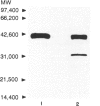Abstract
It had previously been suggested that the submandibular gland (SMG) of mice and rats may contain in vivo immunosuppressive factor(s). To identify such factor(s), we used a multi-step purification procedure of rat SMG extracts. Gel filtration chromatography of the SMG crude extract resulted in two pools of fractions with significant effects on lymphocyte reactivity in the in vitro concanavalin A (Con A) bioassay. Of these two pools, only the one with lower molecular weight resulted in the prolongation of murine skin allograft survival, the suppression of the delayed-type hypersensitivity (DTH) response to picryl chloride and the decrease in number of direct (IgM) plaque-forming cells against sheep red blood cells. Fractionation of this low molecular weight (LMW) pool through hydrophobic interaction chromatography resulted in three protein fractions designated A, B and C. Of these fractions only fraction A produced significant suppression of the DTH response. Further purification of fraction A with anion exchange chromatography produced two fractions with immunosuppressive activity in the DTH response. One fraction demonstrated on SDS-PAGE a single component of 40,000 MW, while the other had two components of 30,000 and 40,000 MW respectively.
Full text
PDF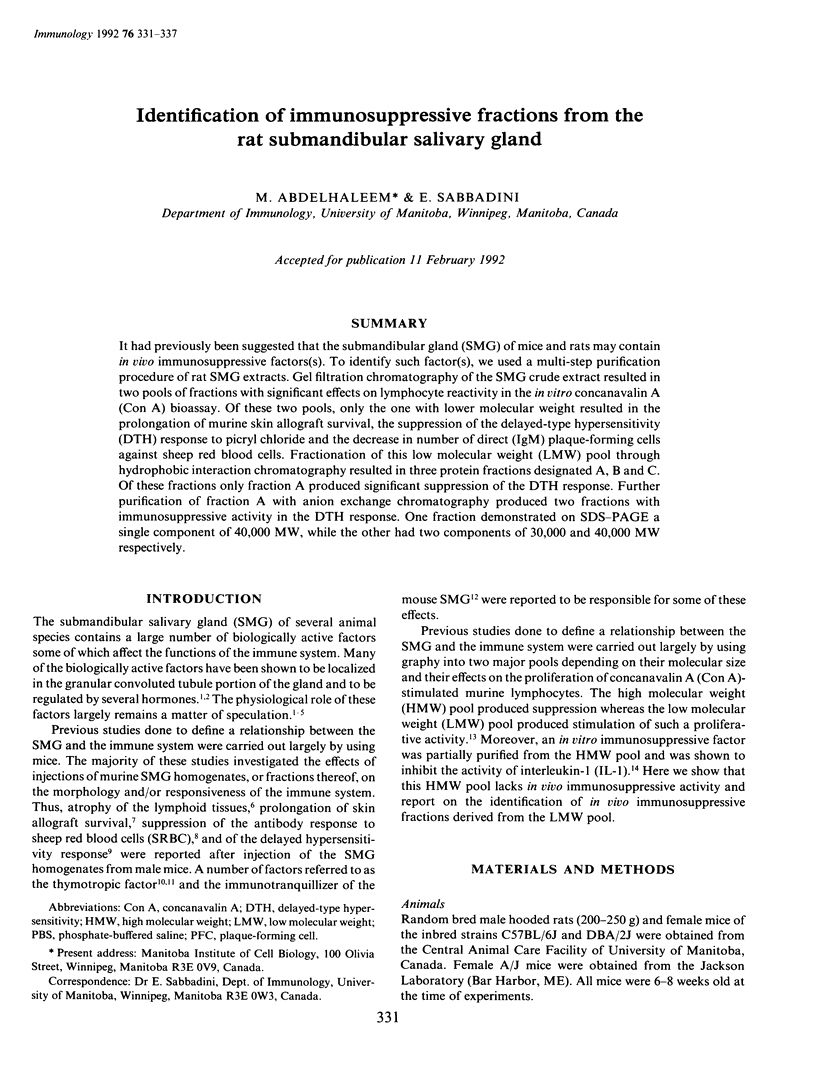
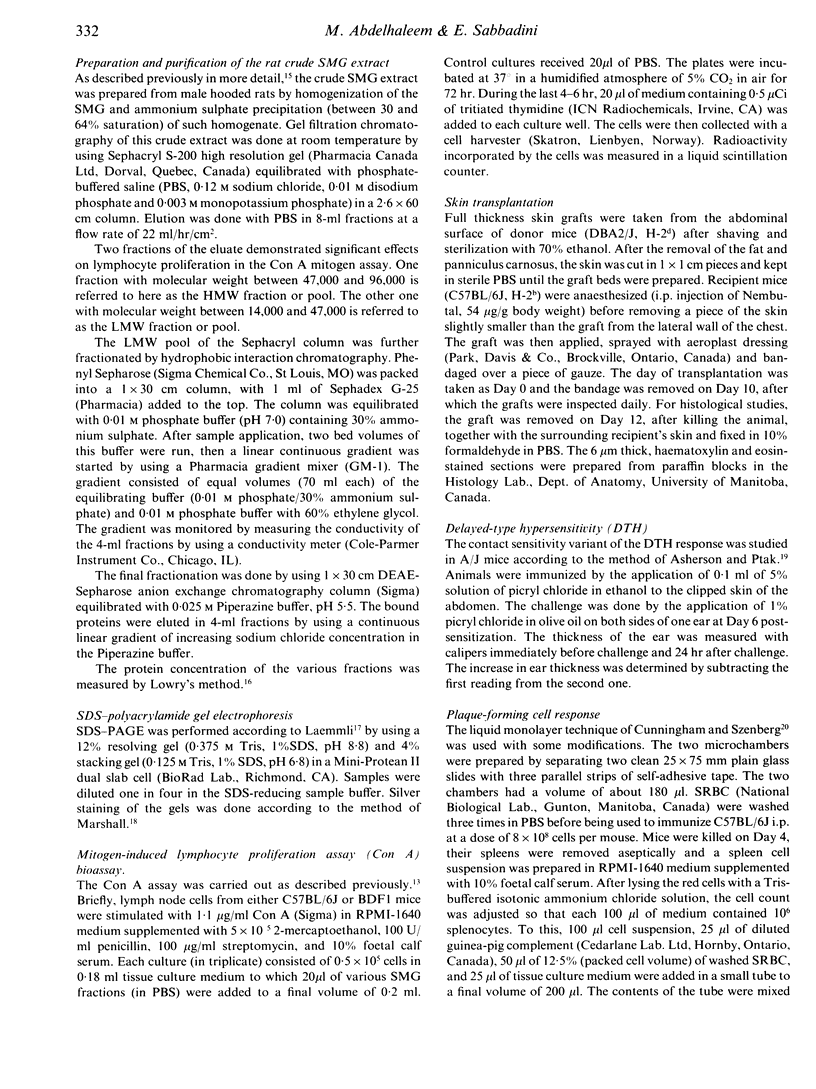
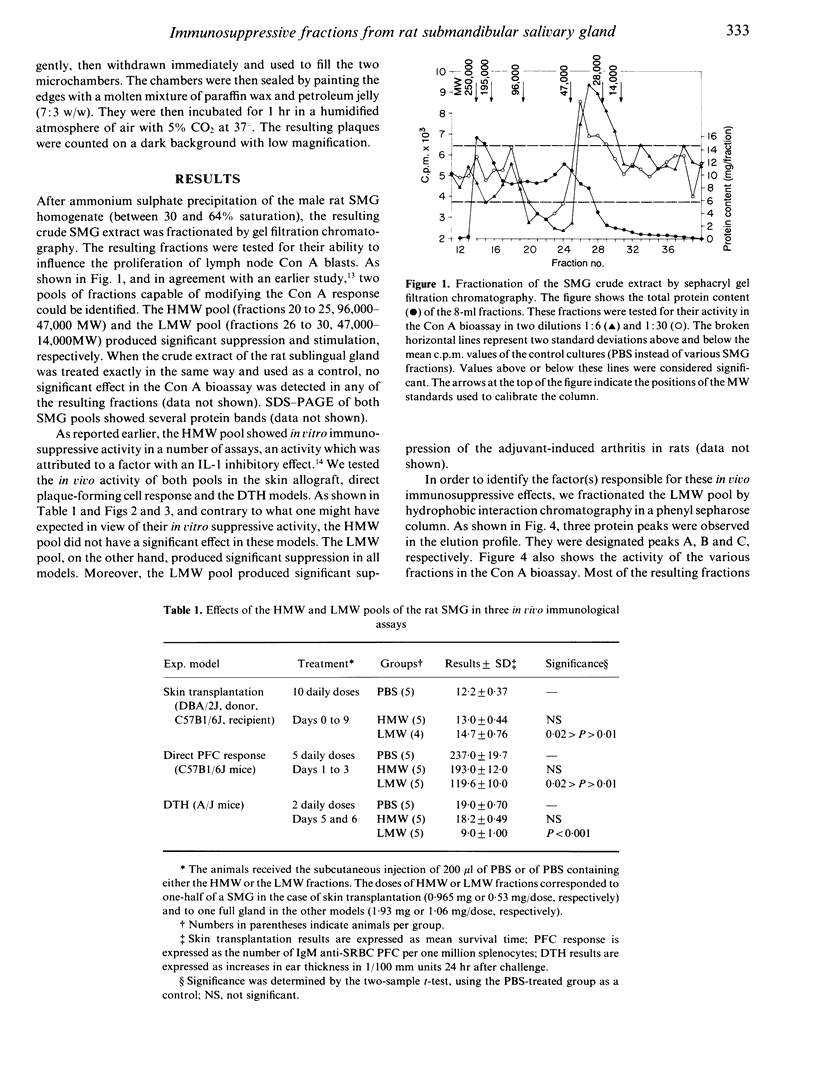
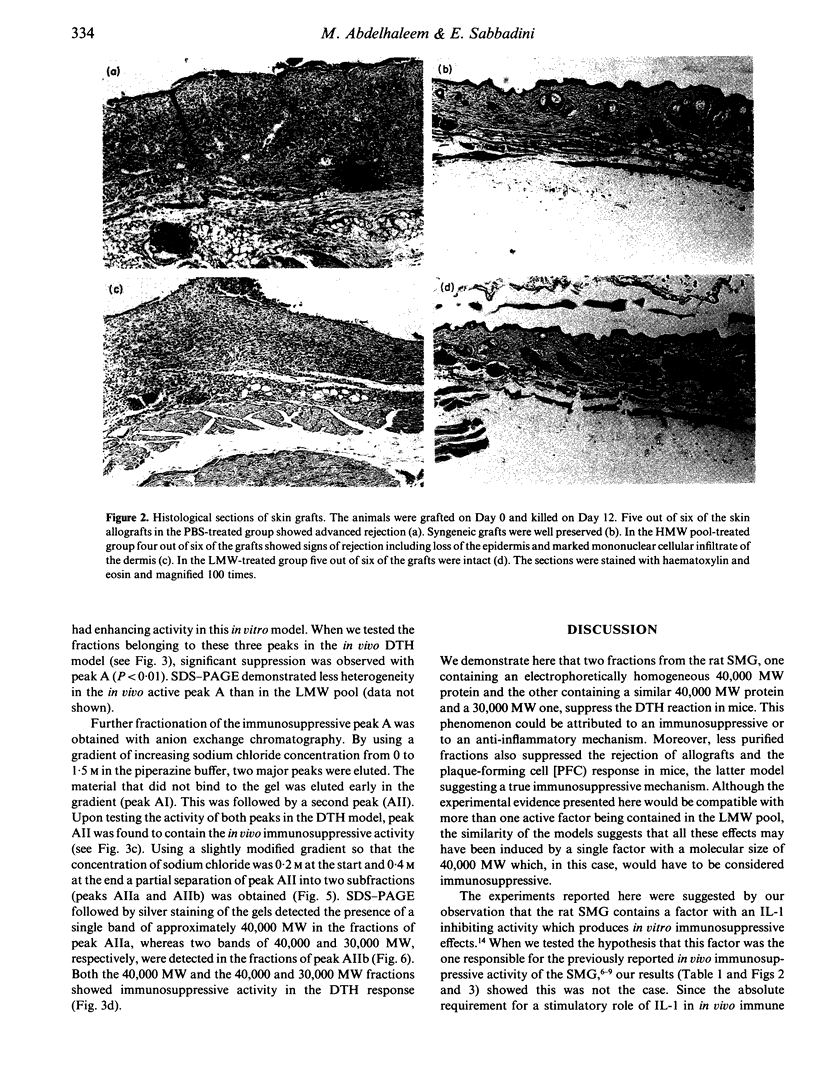
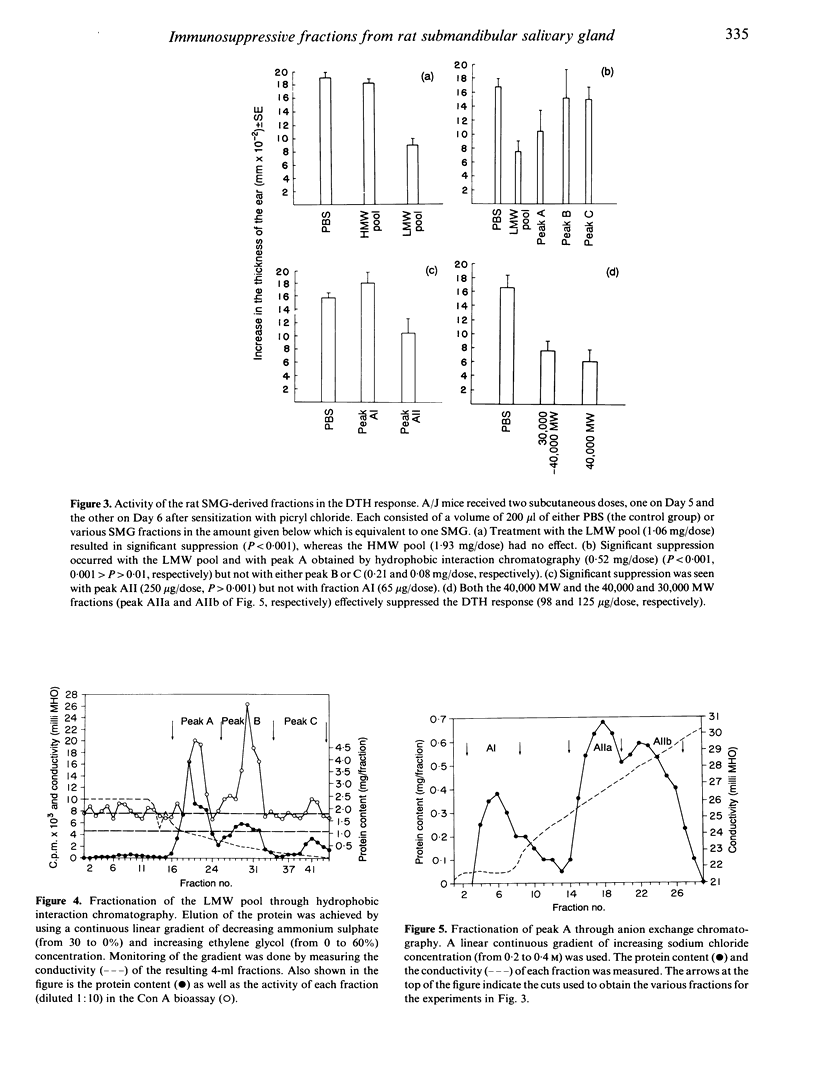
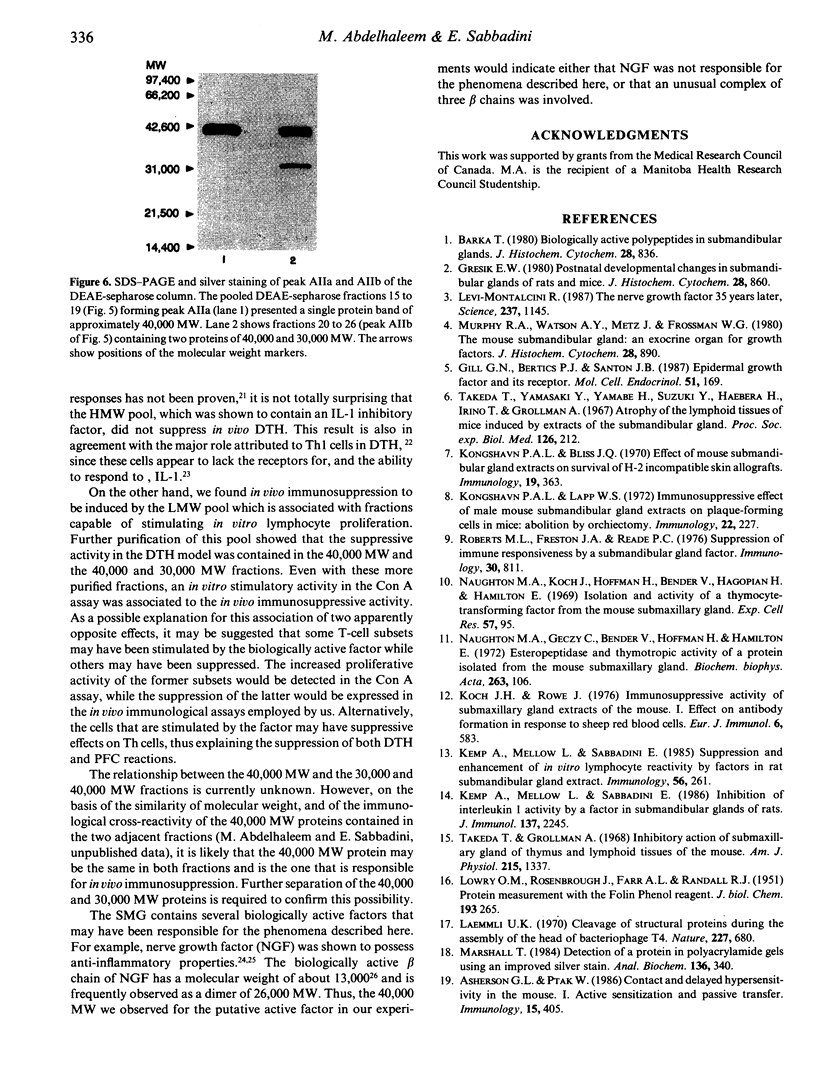
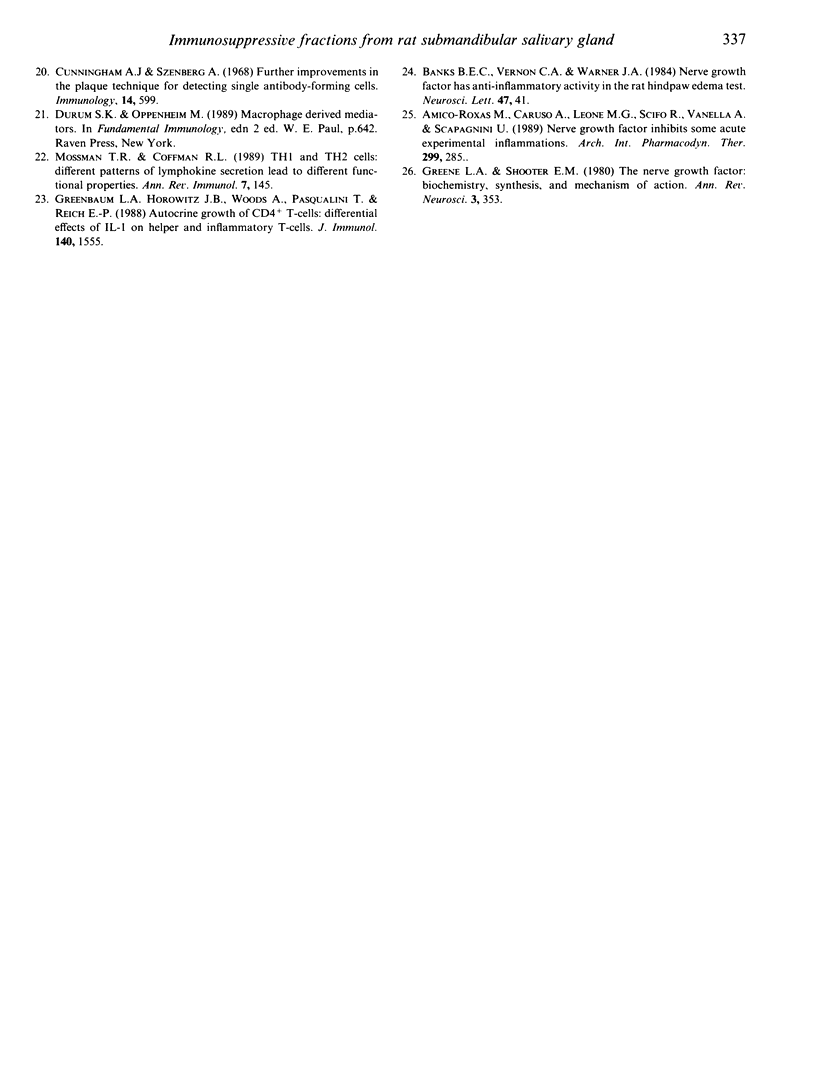
Images in this article
Selected References
These references are in PubMed. This may not be the complete list of references from this article.
- Amico-Roxas M., Caruso A., Leone M. G., Scifo R., Vanella A., Scapagnini U. Nerve growth factor inhibits some acute experimental inflammations. Arch Int Pharmacodyn Ther. 1989 May-Jun;299:269–285. [PubMed] [Google Scholar]
- Asherson G. L., Ptak W. Contact and delayed hypersensitivity in the mouse. I. Active sensitization and passive transfer. Immunology. 1968 Sep;15(3):405–416. [PMC free article] [PubMed] [Google Scholar]
- Banks B. E., Vernon C. A., Warner J. A. Nerve growth factor has anti-inflammatory activity in the rat hindpaw oedema test. Neurosci Lett. 1984 Jun 1;47(1):41–45. doi: 10.1016/0304-3940(84)90383-5. [DOI] [PubMed] [Google Scholar]
- Barka T. Biologically active polypeptides in submandibular glands. J Histochem Cytochem. 1980 Aug;28(8):836–859. doi: 10.1177/28.8.7003006. [DOI] [PubMed] [Google Scholar]
- Cunningham A. J., Szenberg A. Further improvements in the plaque technique for detecting single antibody-forming cells. Immunology. 1968 Apr;14(4):599–600. [PMC free article] [PubMed] [Google Scholar]
- Gill G. N., Bertics P. J., Santon J. B. Epidermal growth factor and its receptor. Mol Cell Endocrinol. 1987 Jun;51(3):169–186. doi: 10.1016/0303-7207(87)90027-x. [DOI] [PubMed] [Google Scholar]
- Greenbaum L. A., Horowitz J. B., Woods A., Pasqualini T., Reich E. P., Bottomly K. Autocrine growth of CD4+ T cells. Differential effects of IL-1 on helper and inflammatory T cells. J Immunol. 1988 Mar 1;140(5):1555–1560. [PubMed] [Google Scholar]
- Greene L. A., Shooter E. M. The nerve growth factor: biochemistry, synthesis, and mechanism of action. Annu Rev Neurosci. 1980;3:353–402. doi: 10.1146/annurev.ne.03.030180.002033. [DOI] [PubMed] [Google Scholar]
- Gresik E. W. Postnatal developmental changes in submandibular glands of rats and mice. J Histochem Cytochem. 1980 Aug;28(8):860–870. doi: 10.1177/28.8.6160181. [DOI] [PubMed] [Google Scholar]
- Kemp A., Mellow L., Sabbadini E. Inhibition of interleukin 1 activity by a factor in submandibular glands of rats. J Immunol. 1986 Oct 1;137(7):2245–2251. [PubMed] [Google Scholar]
- Kemp A., Mellow L., Sabbadini E. Suppression and enhancement of in vitro lymphocyte reactivity by factors in rat submandibular gland extracts. Immunology. 1985 Oct;56(2):261–267. [PMC free article] [PubMed] [Google Scholar]
- Koch J. H., Rowe J. Immunosuppressive activity of submaxillary gland extracts of the mouse. I. Effect on antibody formation in response to sheep red blood cells. Eur J Immunol. 1976 Aug;6(8):583–588. doi: 10.1002/eji.1830060811. [DOI] [PubMed] [Google Scholar]
- Kongshavn P. A., Bliss J. Q. Effect of mouse submandibular gland extracts on survival of H-2 incompatible skin allografts. Immunology. 1970 Aug;19(2):363–367. [PMC free article] [PubMed] [Google Scholar]
- Kongshavn P. A., Lapp W. S. Immunosuppressive effect of male mouse submandibular gland extracts on plaque-forming cells in mice: abolition by orchiectomy. Immunology. 1972 Feb;22(2):227–230. [PMC free article] [PubMed] [Google Scholar]
- LOWRY O. H., ROSEBROUGH N. J., FARR A. L., RANDALL R. J. Protein measurement with the Folin phenol reagent. J Biol Chem. 1951 Nov;193(1):265–275. [PubMed] [Google Scholar]
- Laemmli U. K. Cleavage of structural proteins during the assembly of the head of bacteriophage T4. Nature. 1970 Aug 15;227(5259):680–685. doi: 10.1038/227680a0. [DOI] [PubMed] [Google Scholar]
- Marshall T. Detection of protein in polyacrylamide gels using an improved silver stain. Anal Biochem. 1984 Feb;136(2):340–346. doi: 10.1016/0003-2697(84)90227-6. [DOI] [PubMed] [Google Scholar]
- Mosmann T. R., Coffman R. L. TH1 and TH2 cells: different patterns of lymphokine secretion lead to different functional properties. Annu Rev Immunol. 1989;7:145–173. doi: 10.1146/annurev.iy.07.040189.001045. [DOI] [PubMed] [Google Scholar]
- Murphy R. A., Watson A. Y., Metz J., Forssmann W. G. The mouse submandibular gland: an exocrine organ for growth factors. J Histochem Cytochem. 1980 Aug;28(8):890–902. doi: 10.1177/28.8.6969274. [DOI] [PubMed] [Google Scholar]
- Naughton M. A., Geczy C., Bender V., Hoffman H., Hamilton E. Esteropeptidase and thymotropic activity of a protein isolated from the mouse submaxillary gland. Biochim Biophys Acta. 1972 Mar 15;263(1):106–114. doi: 10.1016/0005-2795(72)90164-x. [DOI] [PubMed] [Google Scholar]
- Naughton M. A., Koch J., Hoffman H., Bender V., Hagopian H. Isolation and activity of a thymocyte-trasforming factor from the mouse submaxillary gland. Exp Cell Res. 1969 Sep;57(1):95–103. doi: 10.1016/0014-4827(69)90371-1. [DOI] [PubMed] [Google Scholar]
- Roberts M. L., Freston J. A., Reade P. C. Suppression of immune responsiveness by a submandibular salivary gland factor. Immunology. 1976 Jun;30(6):811–814. [PMC free article] [PubMed] [Google Scholar]
- Takeda T., Grollman A. Inhibitory action of submaxillary gland on thymus and lymphoid tissues of the mouse. Am J Physiol. 1968 Dec;215(6):1337–1342. doi: 10.1152/ajplegacy.1968.215.6.1337. [DOI] [PubMed] [Google Scholar]
- Takeda T., Yamasaki Y., Yamabe H., Suzuki Y., Haebara H., Irino T., Grollman A. Atrophy of the lymphoid tissues of mice induced by extracts of the submaxillary gland. Proc Soc Exp Biol Med. 1967 Oct;126(1):212–216. doi: 10.3181/00379727-126-32404. [DOI] [PubMed] [Google Scholar]




